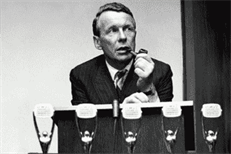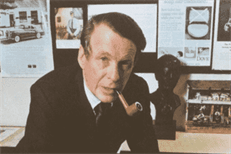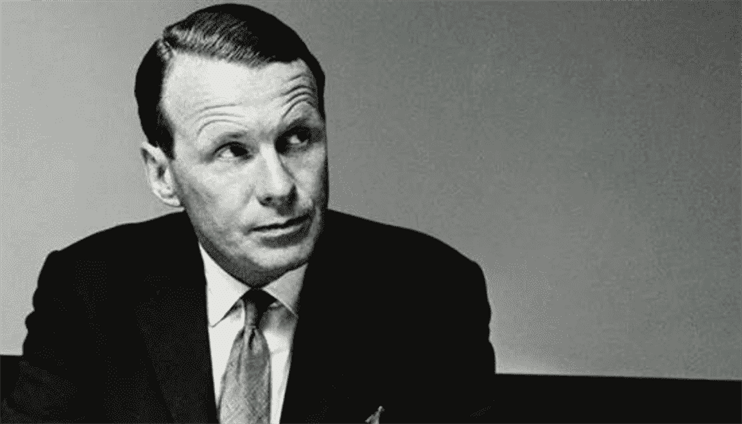For those who ask, "How should advertising copy be written?" Here are 8 golden rules for advertising headlines from David Ogilvy, considered the father of advertising❗️
The headline is the most important element of most advertisements. It determines whether the reader will read the main text or not.
The number of people who read the headline is almost 5 times higher than the number who read the body text. It turns out that you spend 80 cents of $1 on writing a headline.
If you don't say anything in the headline that isn't sales-oriented, you're wasting 80% of your company's money. The biggest sin is writing an ad copy without a headline. Such illogical miracles still happen. I never envy such ad writers.
(c) Devid Oqilvi
1. The title is the “product label.”
The headline is the “label of the product.” Hold the headline up to grab the attention of readers who will buy the product you are advertising. If you are selling a product for STOMACH PAIN PROBLEM, use the phrase STOMACH PAIN PROBLEM in the headline. This headline will grab the attention of anyone who has this problem.
If you want MOTHERS to read your ad, use the word MOTHERS in the headline.
Similarly, don't write phrases that will exclude your product's target audience. If the product you're advertising is used by both men and women, don't target only women in the headline, as this will leave male customers out of the picture.


2. Each headline should appeal to the reader's personal interest.
Each headline should appeal to the reader's personal interest. It should promise benefits to women, as in the "Hormone Cream" ads:
A YOUNGER LOOK FOR WOMEN OVER 35.
3. Words used in titles
Always try to include news content in your headlines, as consumers are always looking for a new product, new instructions for using a previous product, or an improved innovation in a previous product.
The two most powerful words to use in a title are FREE and NEW. “Free” may be used less often, but with more effort, you can use the word NEW wherever possible.
4. Words that work wonders in advertising
These are the words and phrases that work wonders in advertising:
- How to do it?
- Unexpected
- Now
- Good news!
- Meet!
- Here
- Just arrived
- Improved
- Fascinating
- Sensation
- Notable
- Revolutionary
- Amazing
- Miraculous
- Amazing
- Magical
- Offer
- Fast
- Easy
- Desired
- Wanted
- The square reads
- Recommendation for ...
- Compare
- Price advantage
- Compare
- Hurry up!
- Last chance!
Don't give up on these clichés. They're overused, but they still work. That's why direct sales companies often use these headlines in their advertising.

5. Use the brand name in the title
The number of people who read headlines is 5 times higher than the number who read the main text, so it is very important to at least let the reader know what brand you are promoting in the headline. That is why you should use the brand in the headline most of the time
“The number of people who read the headline is almost 5 times higher than the number who read the body copy. It turns out that you spend 80 cents of every $1 on writing a headline.”
David Ogilvie
6. How many words should be written in an ad title?
Include your sales promise in the headline. This requires a long headline. A headline study conducted by the New York University School of Retailing in conjunction with a major retailer found that 10-word headlines containing news and information led to more sales than shorter headlines.
Headlines of 6 to 12 words are more effective than shorter headlines, and there is no significant difference in readability between a 12-word headline and a 3-word headline.
If you grab attention with your headline, people will read the rest of your post. That's why you should end your headline with a "bait" that will entice them to read further.
7. Mistakes we make when writing ads
Some copywriters engage in wordplay in headlines - using double entendres, literary allusions, and other incomprehensible expressions. THESE ARE SIN.
In 1960, The Times Literary Supplement criticized the habit of playing tricks on English advertising, describing it as “a middle-class joke designed to amuse the advertiser and his customers, seeking comfort.” And indeed, it is. DON’T PLAY GAMES WITH READERS. Headlines of 6 to 12 words are more effective than shorter ones, and there is no significant difference in readability between a 12-word headline and a 3-word headline.
If you grab attention with your headline, people will read the rest of your post. That's why you should end your headline with a "bait" that will entice them to read further.
8. What should we not do when writing an advertisement?
Avoid blind headings. These are headings that are not understood without reading the main text that follows. It is important to remember that most people do not read the main text.
We hope this article will serve as a small desktop book for you when writing advertising copy, further increasing the effectiveness of the text you write.
We will continue our blogs about copywriting. Stay tuned.
📞 +994(70)9941804
📩 info@360marketinginq.az
